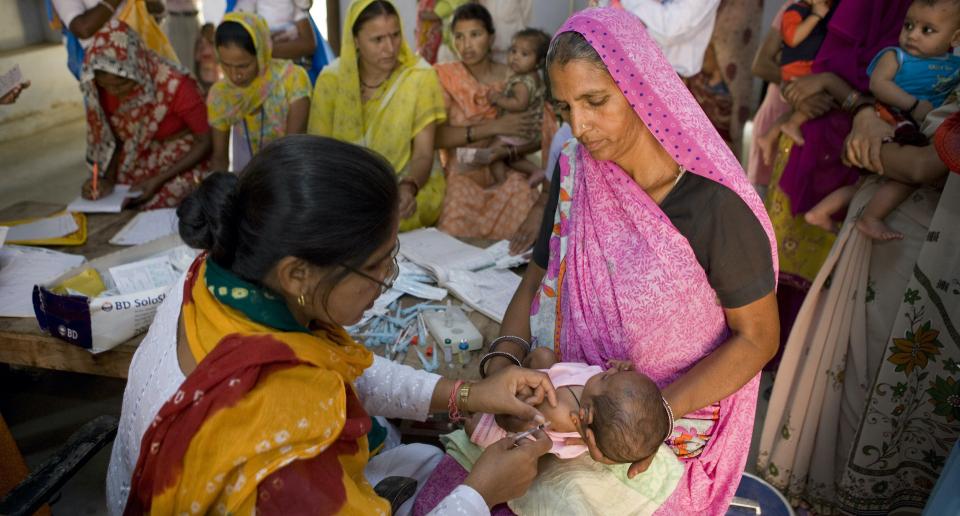
Each year, 20 million babies are born underweight. Nearly half aren’t identified and treated, meaning they are more likely to die within the first month or develop lifelong health issues.
To find these underweight infants, health workers in the developing world use spring scales and measure by hand. But due to supply-chain issues, scales don’t always reach the practitioners who need them. Data quality of hand-recorded weights can be spotty and, in some areas, cultural taboos prevent workers from touching newborns.
Rahul Panicker, chief innovation officer of Wadhwani Institute of Artificial Intelligence, wondered if artificial intelligence could provide a solution.
“For 15 years, we’ve done it this way and it hasn’t worked. We’re missing half the babies,” he says.
The nonprofit research institute is currently creating an AI-powered anthropometry tool that any health care worker can access on a smartphone. Using 3D scans and videos of thousands of babies, Wadhwani AI has cataloged length, weight, and other vital statistics. In the field, a health care practitioner could take a short video of a newborn and, through the use of computer vision, measure and weigh a baby without touching the child.
Wadhwani AI, says Panicker, launched two years ago to focus on AI for social good and global development. It partners with technology providers and government, nonprofits and NGOs to develop scalable answers to the developing world’s biggest health, education, agriculture, and finance problems.
“Social sectors and tech partners don’t often speak the same language,” he notes. “We bridge that gap.”
Before approaching any problem, Panicker says, the organization asks seven key questions:
-
Is it a big problem?
-
Does it have an AI solution? Some issues, Panicker says, can be better solved without the use of technology.
-
Will solving the AI part make enough of a difference?
-
Will the solution be accepted by stakeholders? You may have a great solution to help doctors in the surgical room, he notes, but it helps no one if doctors won’t use it.
-
Does the data exist or can it be created easily enough?
-
Are there partner organizations willing to co-create and pilot a test?
-
Can the program scale?
Wadhwani AI is currently working on two other projects as well.
The nonprofit is working with farmers who grow cotton, one of the largest cash crops in the world, to quickly identify pests and use the appropriate type and amounts of pesticide to combat them. In this solution, farmers place large yellow fly strips in the fields at various intervals, which capture pests affecting the field. Farmers take photos of those strips, and Wadhwani AI analyzes the images to understand what pests are worrisome, which are innocuous, and then recommends appropriate pesticide management.
In another potential solution, the nonprofit hopes to prevent deaths associated with a treatable disease: tuberculosis. In 2018, 10 million people contracted TB, and 1.5 million died. This curable disease turns deadly because of two issues: People aren’t diagnosed, or they don’t complete the medical treatments. Wadhwani AI is attempting technology approaches to both problems. By using correlated data including population density, weather, economic status, malnutrition statistics, and the strength of the health system in a given area, the nonprofit built a heatmap that pinpoints areas where health care workers should concentrate their outreach. And to predict who might not finish their treatments, the company has built a system analyzing patient data, treatment-related phone records, socioeconomic information, and other data points.
“Global agencies and governments are eager to solve these problems and know they can’t solve them without technology,” Panicker says.
Panicker spoke on campus as a guest of the Stanford Institute for Human-Centered Artificial Intelligence. He holds a master’s and PhD in electrical engineering from Stanford. To learn more about upcoming HAI speakers and events, sign up for the email newsletter or visit the events page.